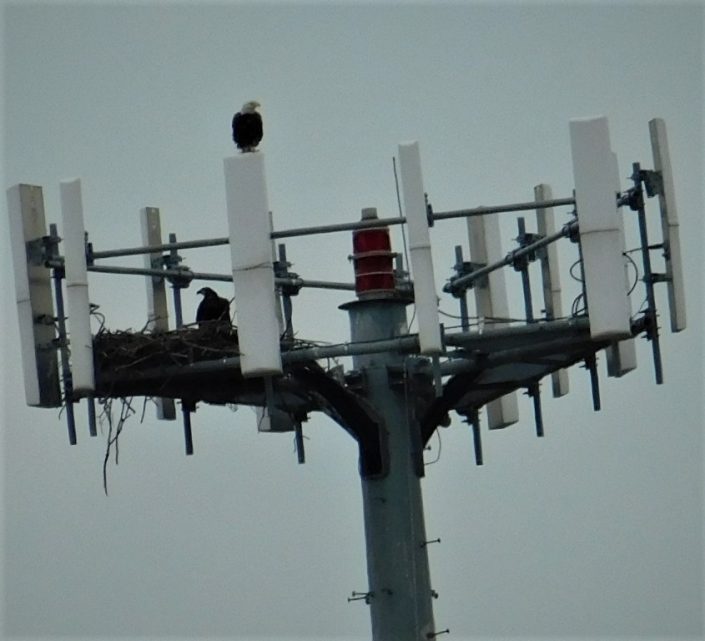NJ101.5 News: Bald eagle comeback continues in New Jersey
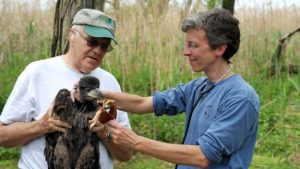

by Ben Wurst, Habitat Program Manager

Mid-summer marks the nestling period of nesting ospreys, a coastal raptor, whose diet consists mainly of fish. As a state that’s heavily influenced by its location along the Atlantic Ocean, they play a critical role in our coastal ecosystem. Ospreys are important bioindicators of the health of our coastal waters, through the lens of their prey, where pollutants are biomagnified through the food chain. As we consume many of the same fish, they show the effects of these pollutants long before humans, so the health of their population has implications for our coastal waters and us! Continue reading “2018 Osprey Outlook”
Story by Michelle Gladden, Asbury Park Sun
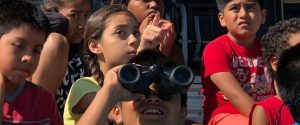
It is only week two of the Conserve Wildlife Foundation (CWF) Summer Learning Experience program, a part of the Asbury Park School District Summer Camp offerings, and third-grade students have had the opportunity to not only see an osprey up close and personal but to visit a local nest and learn to simulate building the predatory bird’s nesting place.
Continue reading “Asbury Park students meet ospreys at high school football field”
NJ Eagle Chicks Spread their wings and fly.
by Larissa Smith; CWF biologist
So far this season 123 eagle chicks have fledged (taken their first flight). Even after fledging the chicks will stay around the nest area for the next few weeks learning to hunt, fly and survive on their own.
Below are some photos of recent fledges taken by NJ Eagle Project Volunteers
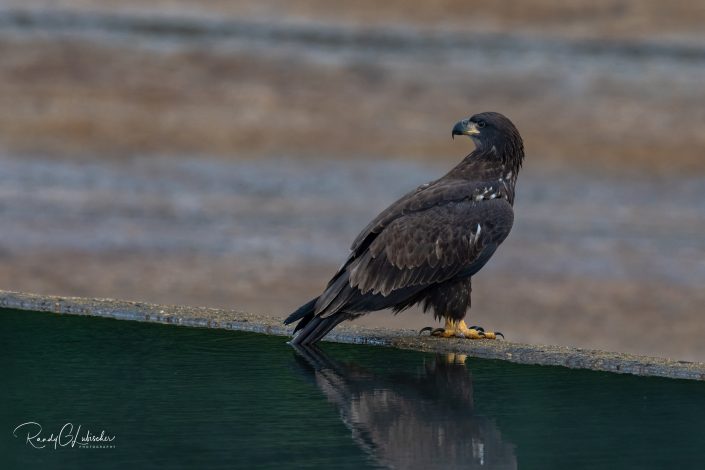
Continue reading “Photos From The Field”
by Larry Niles (Part 3 of 3)
With the stopover period winding down, we can say the red knot and other shorebird species left the bay in better condition than the disastrous condition of last year. So what does it mean?
First, the last four years have been a sort of ecological roulette for the birds. Horseshoe crab numbers remained at only 1/3 the potential population possible on Delaware Bay leaving birds at the mercy of good conditions to get enough eggs. Last year, water temperatures stayed low during the mid-May depressing the spawn and the density of eggs. Although the average was 8000-eggs/square meter, there were less than 2000 eggs/ meters square in the month of May. Continue reading “Birds in better condition than last year but still face an ecological roulette”
by Larry Niles (Part 2 of 3)
The best news is a direct consequence of these good conditions, the number of knots and turnstones increased this year. Our season-high estimates show that there are 34,500 knots in the bay and 21,000 ruddy turnstones. These may be the highest counts on the bay in at least 15 years.
Why? At first one would conclude the increased numbers on the bay represent a real increase in the size of the population, but it is not. Shorebirds need time to respond to improving conditions because they are relatively slow breeders, as are most Arctic breeders. Knot numbers on Delaware Bay basically depend on the availability of crab eggs. In bad years, numbers go down because birds come to the bay and leave quickly. Continue reading “Good horseshoe crab egg densities draw 34,500 Red Knots to the bay”
by Larry Niles (Part 1 of 3)
The horseshoe crabs extended their breeding period into the neap tide phase after the cold weather of mid-May decreased water temperature during the spring tides. The crabs roughly require a water temperature of about 59 degrees F before breeding begins in earnest. Crabs still breed at a lower temperature, but many more will breed above the temperature threshold.
At the same time, crabs also look for spring tides, the higher high tides that come with full and new moons, because they can breed in sandy places unavailable at lower tides. This year the water cooled during the new moon spring tide and warmed in the neap. Good spawning during the neap tides of the last week was welcome good news. This May good spawning conditions will raise average egg densities about 50% higher than last year. Continue reading “Horseshoe crabs expanded breeding into neap tides”
Thanks to dedicated Conserve Wildlife Foundation of NJ staff and volunteers three osprey chicks were saved from what could have been an unhappy fate.
NJ Osprey Project Volunteers Matt Tribulski, Wayne Russell and John King were surveying osprey nests in the Wildwood back bay area this past weekend. They checked on a nest with three chicks and found that the platform top was broken and a strong possibility it could collapse, especially with any heavy rains or winds. The chicks weren’t old enough to fly and would have fallen to the marsh and died. Continue reading “Osprey Chicks Get A Necessary “Home” Upgrade”
Story by NJ.com

Two volunteer groups and the Seaside Heights public works department teamed to help a baby osprey that had a balloon ribbon tangled around its leg in a nest at Island Beach State Park.
by: Larissa Smith, Biologist
This is a story that shows how individuals and groups work together to help eagles in New Jersey. On May 23rd wildlife rehabilitator, Vicki Schmidt, picked up and transported an injured juvenile eagle to Tri-State Bird Research and Rescue. The eagle had been reported injured and on the ground by a concerned citizen in Hopewell Township, Cumberland County. It was found near a known eagle nest which is located on a communications tower and the injured eagle was assumed to be the chick from that nest. New Jersey Eagle Project volunteer Jim McClain was able to confirm that he last saw the chick on May 19th, perched on one of the tower railings. When he returned on the 23rd and didn’t see the chick, he had assumed it fledged, not knowing that it had been taken to Tri-State.
Young eagles start “branching” (hopping on to branches) as well as; flapping, jumping, and hovering, to strengthen their wings for flight. Eagles fledge around 10- 12 weeks of age. In this case, the young bird most likely took it’s first attempt at a flight and hit an object which injured it’s wing and left it unable to fly. If no one had spotted this bird on the ground it could have been predated or died.
Tri-State reported minor soft tissue damage to the wing, but that the bird was alert and perching. The young eagle continued to recuperate and was banded with a federal band and released on June 1st. Tri-State volunteer Tom Jones transported the bird back to the nest area and with the help of volunteer, Jim McClain, the bird was released. The bird flew and landed on a nearby roof where it perched.
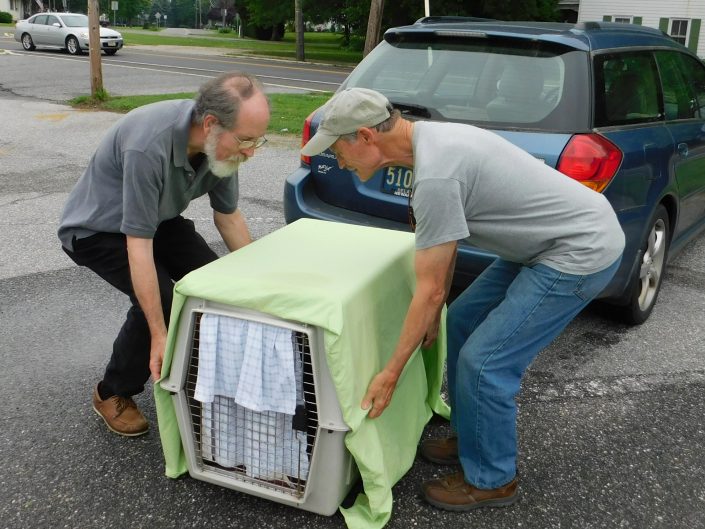
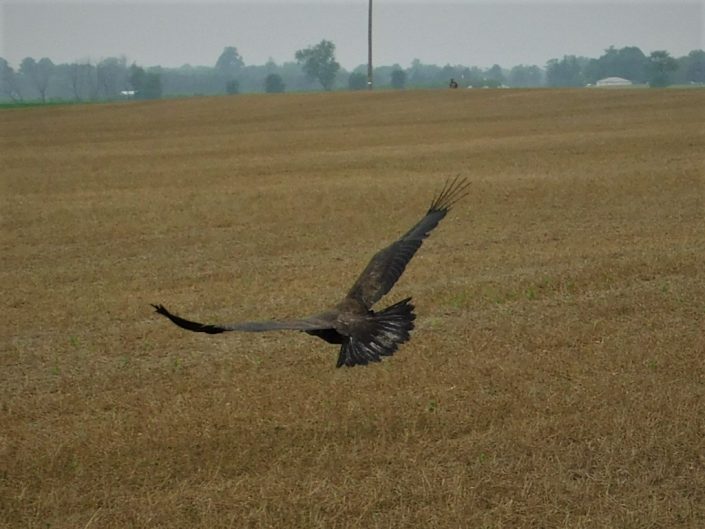
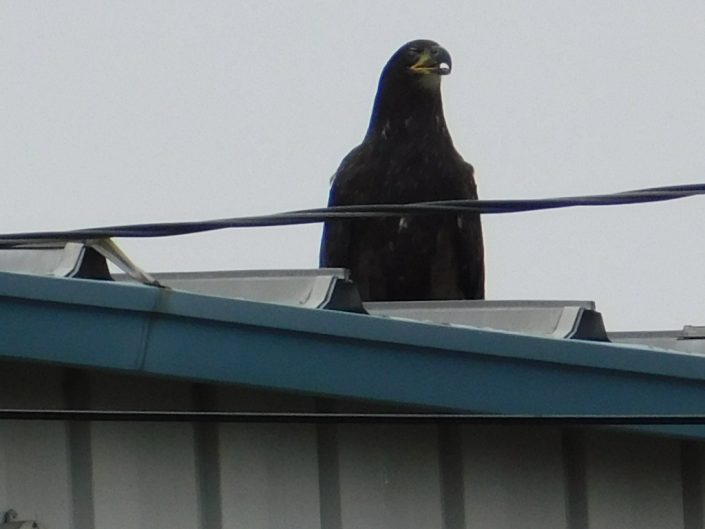
Jim reported that the fledgling and both adults were seen at the nest on June 7th and 9th, so we know that the young eagle is doing well. Thank you to all involved in this lucky eagles recovery.
